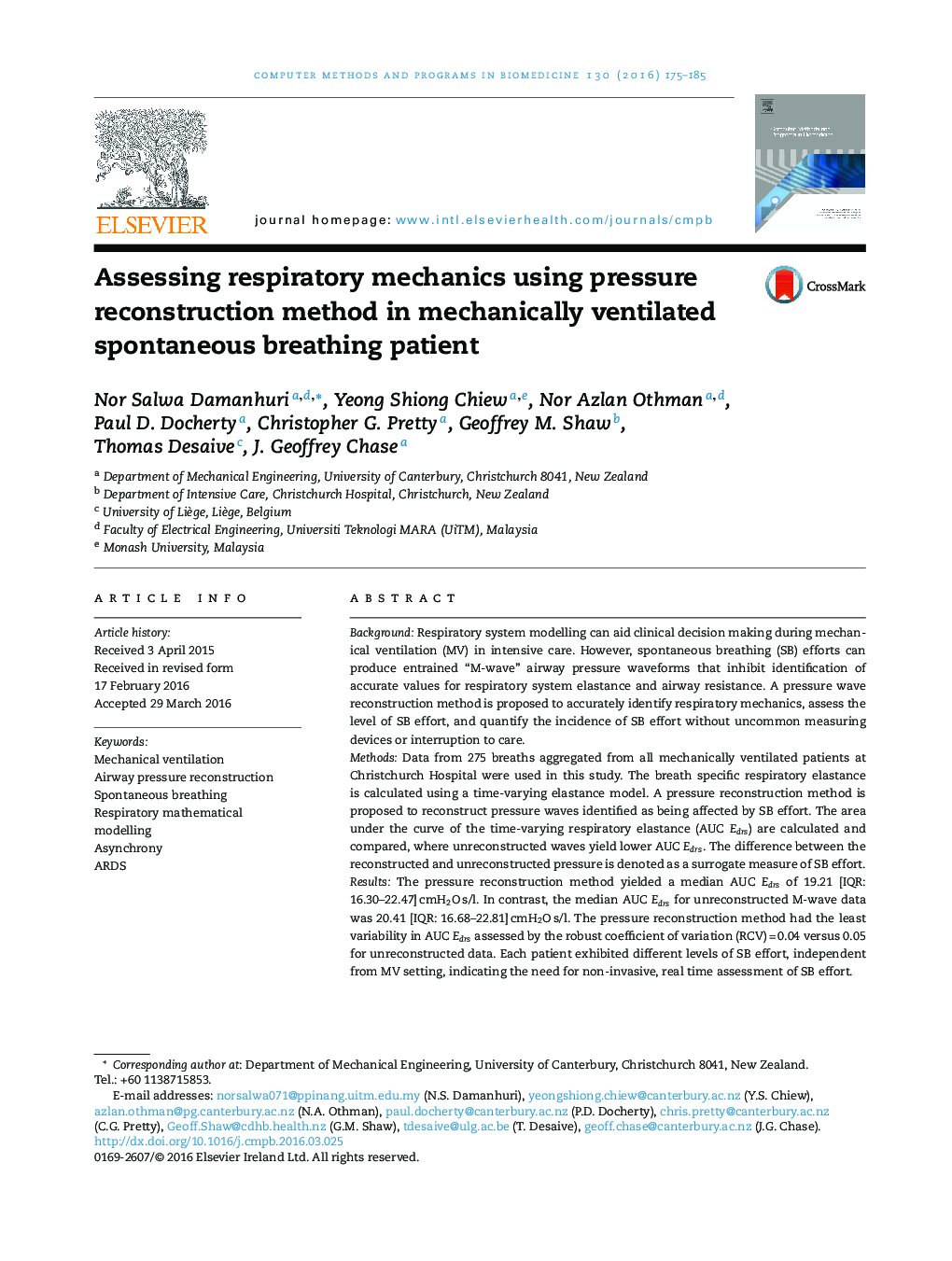| Article ID | Journal | Published Year | Pages | File Type |
|---|---|---|---|---|
| 468643 | Computer Methods and Programs in Biomedicine | 2016 | 11 Pages |
•Mechanically ventilated spontaneous breathing (SB) patient produced entrained wave which is known as M-wave, even though in fully sedated condition, that create problem in estimating the true respiratory mechanics.•Airway pressure reconstruction method is introduced in this paper, which able to reduce the variability in estimated mechanical properties that arise from patient-specific SB efforts, and do not represent variability in the underlying lung mechanics.•More importantly, the airway pressure reconstruction can be used to estimate the SB efforts. These information can potentially be used to assess the level of patient asynchrony and may be clinically useful.•This proof of concept study is thus, a first step to explore the possibility of this type of very simple reconstruction methods, which could be expanded to other ventilation modes as desired.
BackgroundRespiratory system modelling can aid clinical decision making during mechanical ventilation (MV) in intensive care. However, spontaneous breathing (SB) efforts can produce entrained “M-wave” airway pressure waveforms that inhibit identification of accurate values for respiratory system elastance and airway resistance. A pressure wave reconstruction method is proposed to accurately identify respiratory mechanics, assess the level of SB effort, and quantify the incidence of SB effort without uncommon measuring devices or interruption to care.MethodsData from 275 breaths aggregated from all mechanically ventilated patients at Christchurch Hospital were used in this study. The breath specific respiratory elastance is calculated using a time-varying elastance model. A pressure reconstruction method is proposed to reconstruct pressure waves identified as being affected by SB effort. The area under the curve of the time-varying respiratory elastance (AUC Edrs) are calculated and compared, where unreconstructed waves yield lower AUC Edrs. The difference between the reconstructed and unreconstructed pressure is denoted as a surrogate measure of SB effort.ResultsThe pressure reconstruction method yielded a median AUC Edrs of 19.21 [IQR: 16.30–22.47] cmH2O s/l. In contrast, the median AUC Edrs for unreconstructed M-wave data was 20.41 [IQR: 16.68–22.81] cmH2O s/l. The pressure reconstruction method had the least variability in AUC Edrs assessed by the robust coefficient of variation (RCV) = 0.04 versus 0.05 for unreconstructed data. Each patient exhibited different levels of SB effort, independent from MV setting, indicating the need for non-invasive, real time assessment of SB effort.ConclusionA simple reconstruction method enables more consistent real-time estimation of the true, underlying respiratory system mechanics of a SB patient and provides the surrogate of SB effort, which may be clinically useful for clinicians in determining optimal ventilator settings to improve patient care.
